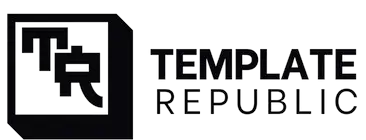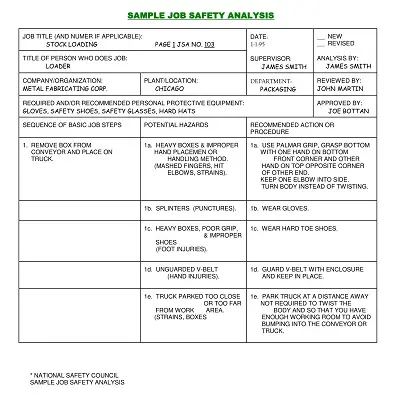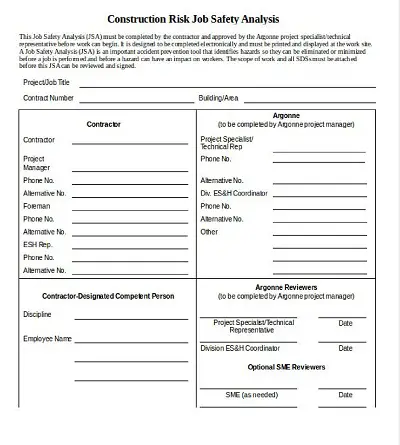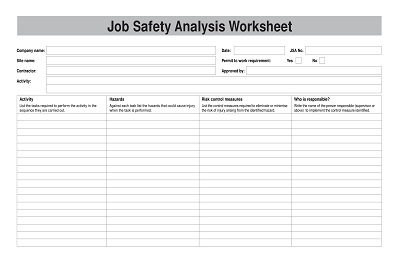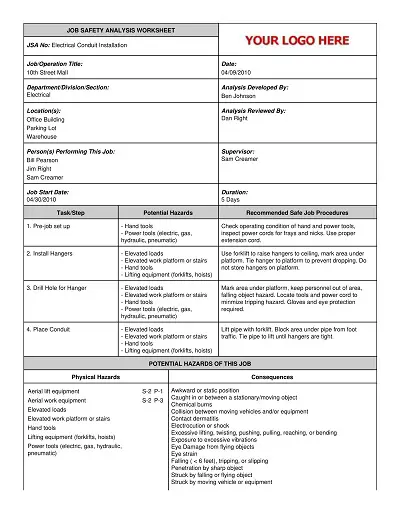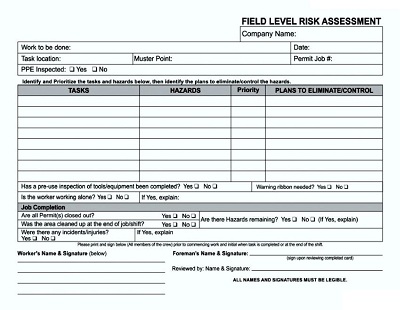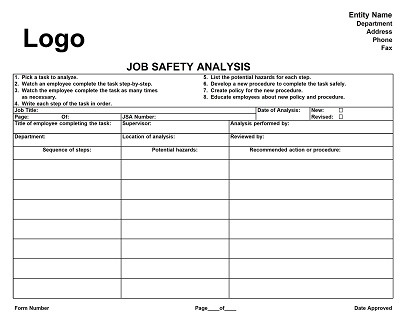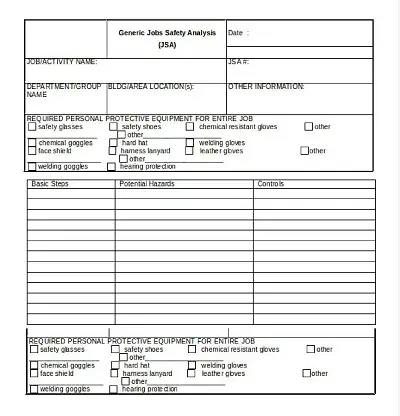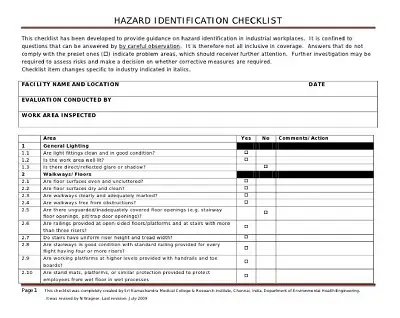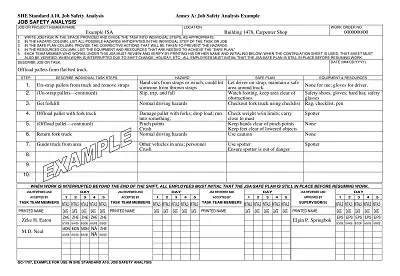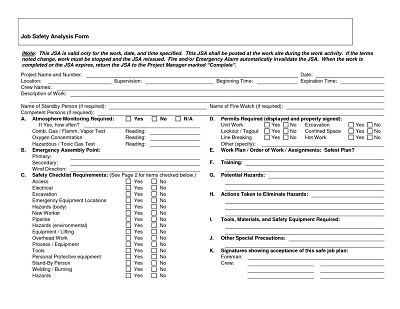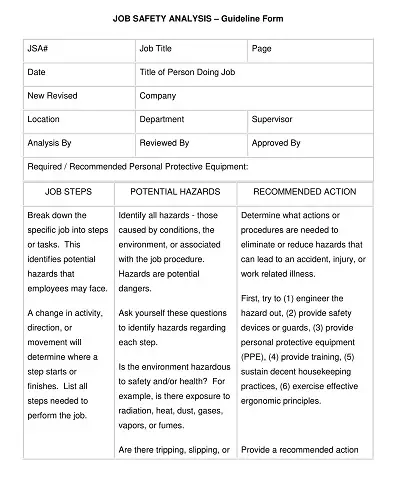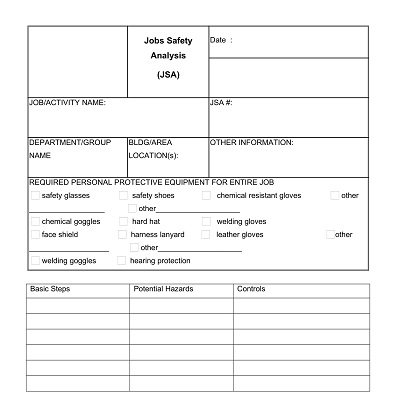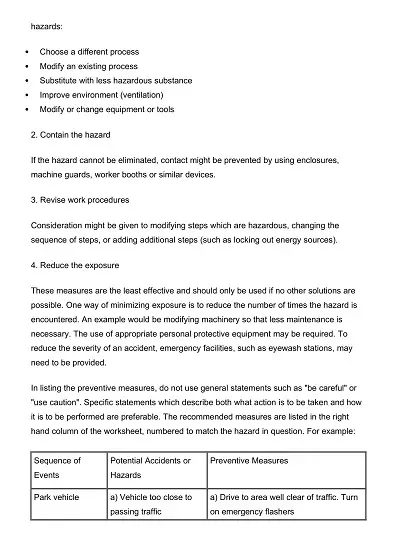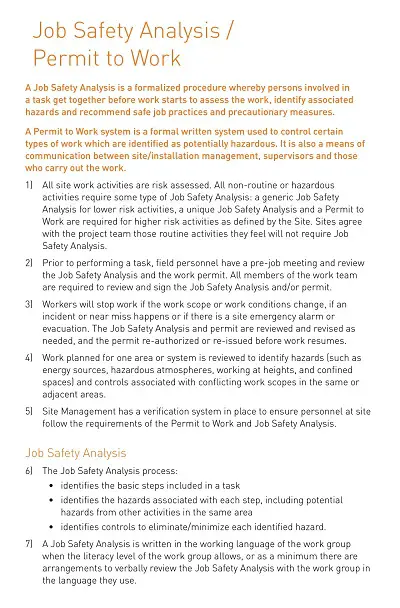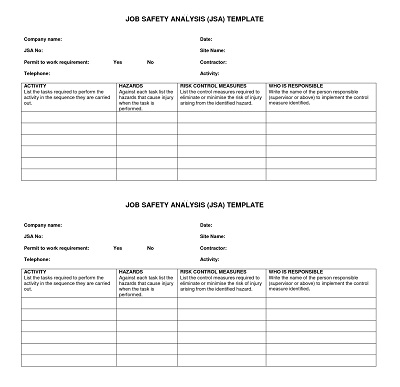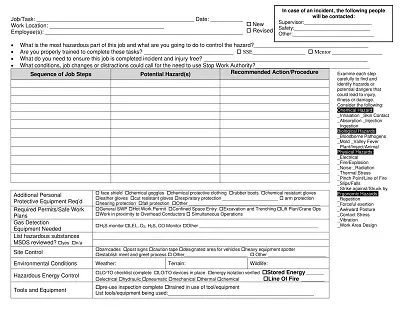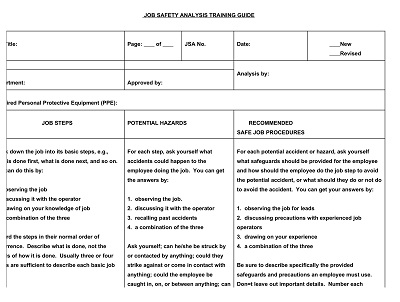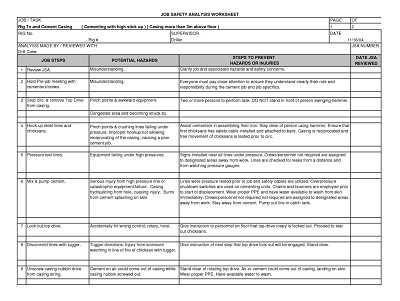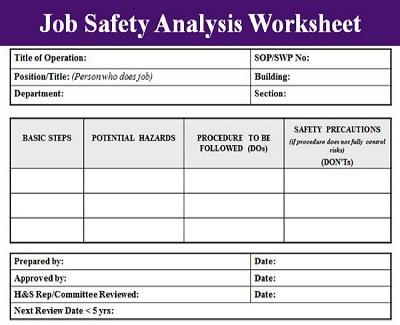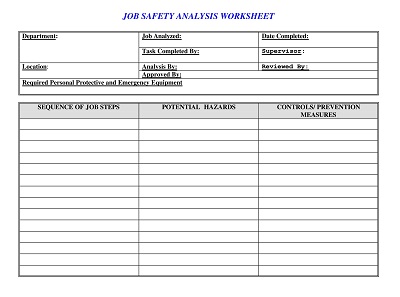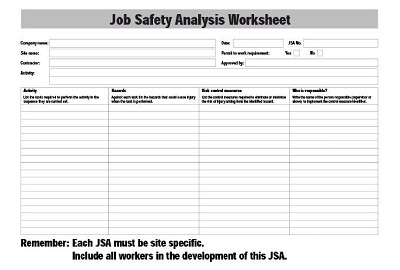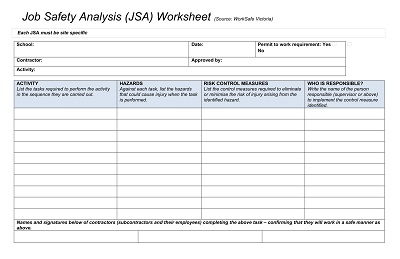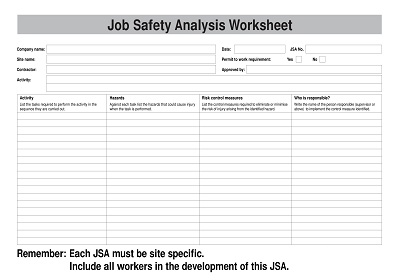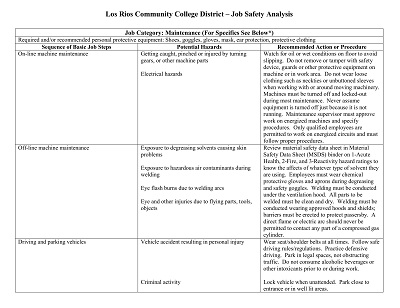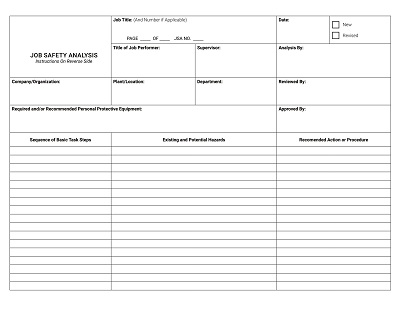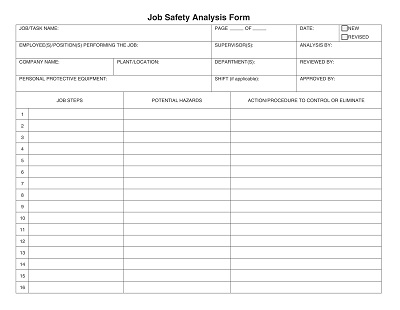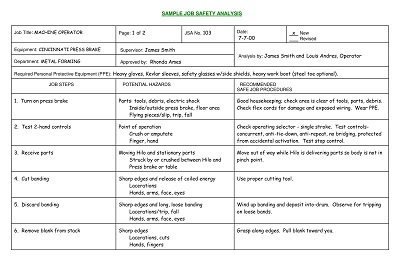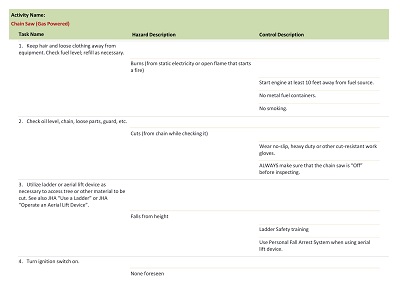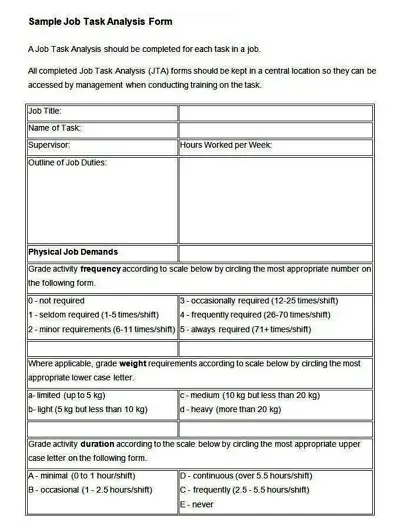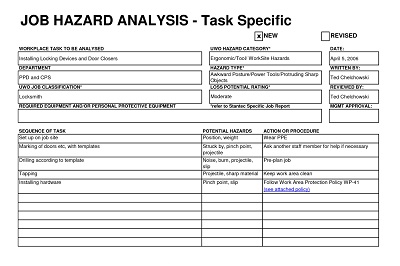40+ Free Printable Job Safety Analysis Form Templates (PDF, Doc)
A job safety analysis form template refers to a document that outlines the detailed process of assessing and mitigating potential hazards in the workplace. This template is designed to help organizations identify potential risks or hazards in their operations and tasks that could lead to accidents or injuries.
Table of Contents
A job safety analysis form template may include information such as the job title, the specific task or work activity, the potential hazards and risks associated with the task, the required personal protective equipment, and preventative measures to minimize the risk of injury. By using this template, businesses can ensure that their workers are aware of the potential hazards in their jobs and are equipped with the necessary information to stay safe and healthy while on the job.
Download Free Printable Job Safety Analysis Form Templates
Importance of Job Safety Analysis
Job safety analysis is a critical process that shouldn’t be taken lightly. Its significance in ensuring a safe and productive workplace can never be overstated. This method involves breaking down job tasks into their individual steps, identifying associated hazards, and determining the best strategies for controlling them.
Job safety analysis can help prevent accidents, injuries, and even fatalities, which can have far-reaching effects on employees and their families. In addition to reducing employee injuries and illnesses, proper JSA implementation can lead to increased productivity, fewer worker compensation claims, and lower overall costs for the organization. Every employee deserves a safe work environment, and JSA is a key component to achieving this goal.
Job Safety Analysis for High-Risk or Hazardous Jobs
When it comes to high-risk or hazardous jobs, safety should always be a top priority. That’s where job safety analysis (JSA) comes in. JSA is a process of identifying and addressing potential hazards associated with a particular job or task. By systematically analyzing each step involved in the job, employers can better understand the safety risks and take measures to mitigate them.
This not only helps to protect employees from injury but also ensures that the job is performed more efficiently and effectively. When it comes to high-risk or hazardous jobs, JSA is an invaluable tool that can help keep workers safe and healthy.
Benefits of Regular Job Safety Analysis Form Audits and Reviews
As an employer, you want to keep your workers safe and maintain a healthy work environment. Regular job safety analysis from audits and reviews can help in achieving this goal. These audits help you identify areas where your workplace safety measures might fall short and give you an opportunity to take corrective action.
By carrying out these audits, you can detect hazards, near misses, or other safety issues that may have gone unnoticed. With this knowledge, you can make necessary changes and implement new safety procedures to reduce the risk of workplace accidents and injuries. By conducting regular safety audits, employees feel more secure in the workplace and can focus on their work with confidence.
Key Components of a Job Safety Analysis Form
When it comes to workplace safety, a job safety analysis form is a crucial tool for identifying potential hazards and reducing the risk of accidents. This form typically includes several key components, such as a detailed description of the task being performed, a list of potential hazards, and recommendations for how to lessen the risk of injury or illness.
By carefully analyzing each aspect of a job and understanding the potential hazards involved, employers can take proactive steps to ensure the safety of their workers. Whether you’re a manager looking to improve safety protocols or an employee looking to better understand workplace risks, understanding the key components of a job safety analysis form can be an essential part of creating a safe work environment.
How to Create a Job Safety Analysis Form Template
Ensuring job safety is mandatory for every employer. It’s a way of protecting the health and well-being of employees while increasing productivity. A Job Safety Analysis (JSA) is a crucial tool for documenting safety hazards and risks associated with a job process. Creating a JSA form template is essential in any workplace, especially if you want to maintain a safe and hazard-free working environment. This guide will provide step-by-step instructions on how to create a job safety analysis form template.
Understand the Purpose of the JSA Form
Before creating a JSA form template, you must understand its purpose. A JSA form is a document that outlines the steps required to complete a job process, the hazards associated with each step, and how to mitigate the risks. The form is used to identify whether all necessary safety measures are in place, making sure that the job is done without any injuries or incidents.
Identify the Job Process
The next step in creating a JSA form template is to identify the job process. It is critical to break down tasks into small components and clearly outline every step of the job. This will help to identify potential hazards and determine how they can be mitigated.
Analyze the Hazards and Risks
After identifying the job process, the next step is to analyze the hazards and risks associated with each step. There are three types of hazards: physical, chemical, and environmental. All hazards should be identified and analyzed before moving to the next step.
Determine the Control Measures
Once you have identified the risks, the next step is to determine the control measures that must be implemented. Control measures are actions that must be taken to reduce the likelihood and severity of hazards. This may include providing personal protective equipment, training, or developing new safety procedures.
Create the JSA Form Template
The last step is to create the JSA form template. Using the information from the previous steps, create a table that outlines the job process, hazards and risks, and control measures. The form must be user-friendly and easily accessible by employees. Include space for employees to give feedback or suggestions to improve the safety of the job process.
